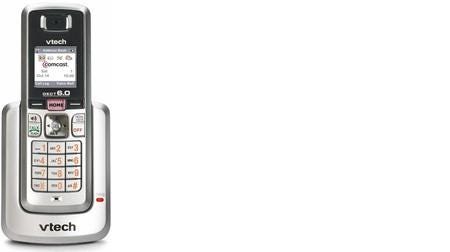Comcast Looking to Overtake Embarq
Comcast could ring in '08 as the fourth largest residential phone service provider in the US, and goose growth with new features

If an expected growth pattern holds up, Comcast Corp. (Nasdaq: CMCSA, CMCSK) could ring in 2008 by unseating Embarq Corp. (NYSE: EQ) as the fourth largest residential phone service provider in the U.S.
The MSO, which surpassed 3 million Comcast Digital Voice (CDV) customers by the end of the second quarter, has previously said it expects to add about 2.5 million CDV subs for 2007. Longer-term, the company is shooing for a residential VOIP service penetration in the range of 20 to 25 percent by 2009.
Comcast will reveal its latest subscriber numbers next Thursday morning (Oct. 25), when it reports its results for the third quarter. Embarq, which reports its third-quarter results on November 1, reported having 4.4 million consumer "access lines" at the end of the second quarter. They both trail the largest residential phone service provider, AT&T Inc. (NYSE: T), as well as Verizon Communications Inc. (NYSE: VZ) and Qwest Communications International Inc. (NYSE: Q).
Although Comcast, like other MSOs, is starting to make hay with a triple-play strategy that bundles voice, video, and Internet services, it's also looking to keep VOIP growth going with the addition of a few bells and whistles.
Comcast, which launched VOIP services about three years ago, revealed some of those enhancements in May, announcing a set of partners that are playing roles in "SmartZone," a PC-based communications hub that will allow high-speed subs to access email, voice mail messages, an instant message application, and an integrated address book through one dashboard. (See Comcast Gets the (Unified) Message .)
Offering online access to voice mail, "is a capability we're finding has increased use and satisfaction for customers," says Tom White, vice president of marketing for Comcast's digital voice product.
In addition to the features offered on SmartZone today, Comcast is also testing a TV-based caller ID application, but has not announced any firm rollout plans or whether it is developing that in-house or working with a partner such as Integra5 Communications Inc. , which just released results of a survey that touts the customer retention power of such an application. (See Survey Touts TV Caller ID.)
Comcast, White adds, is also working on a broadband-powered video telephony application that sits under the SmartZone umbrella, and expects to release details about it later this year.
Earlier this year, Comcast began discussing the rollout of self-install kits and an advanced, DECT-based cordless phone product that works in conjunction with the operator's cable modem service, allowing users to check email and voice mail messages and access their address books. 
Initially, those phones will communicate via a discrete embedded multimedia terminal adapter, but future versions will embed the eMTA into the phone's base station.
Following some early trial work in the Bay Area, the next Comcast markets to get access to the new cordless phones include Boston, Denver, Philadelphia, and the Twin Cities, according to White, who is in San Antonio today to accept the 2007 Customer Value Enhancement Award from Frost & Sullivan . (See F&S Gives Comcast Kudos.)
Comcast has not disclosed pricing on the phone, but, by way of example, a DECT 6.0 cordless phone from VTech Holdings Ltd. (absent the Comcast customizations, of course) retails for $59.99 at BestBuy.com.
— Jeff Baumgartner, Site Editor, Cable Digital News
About the Author(s)
You May Also Like












